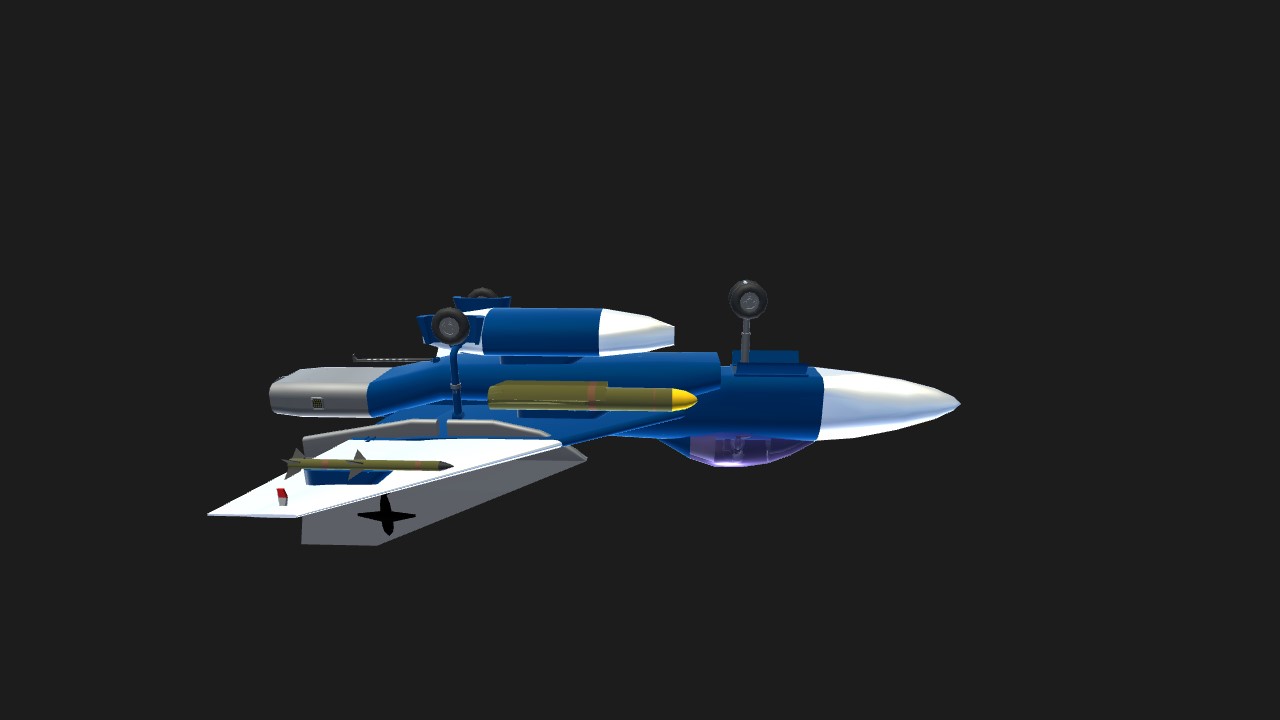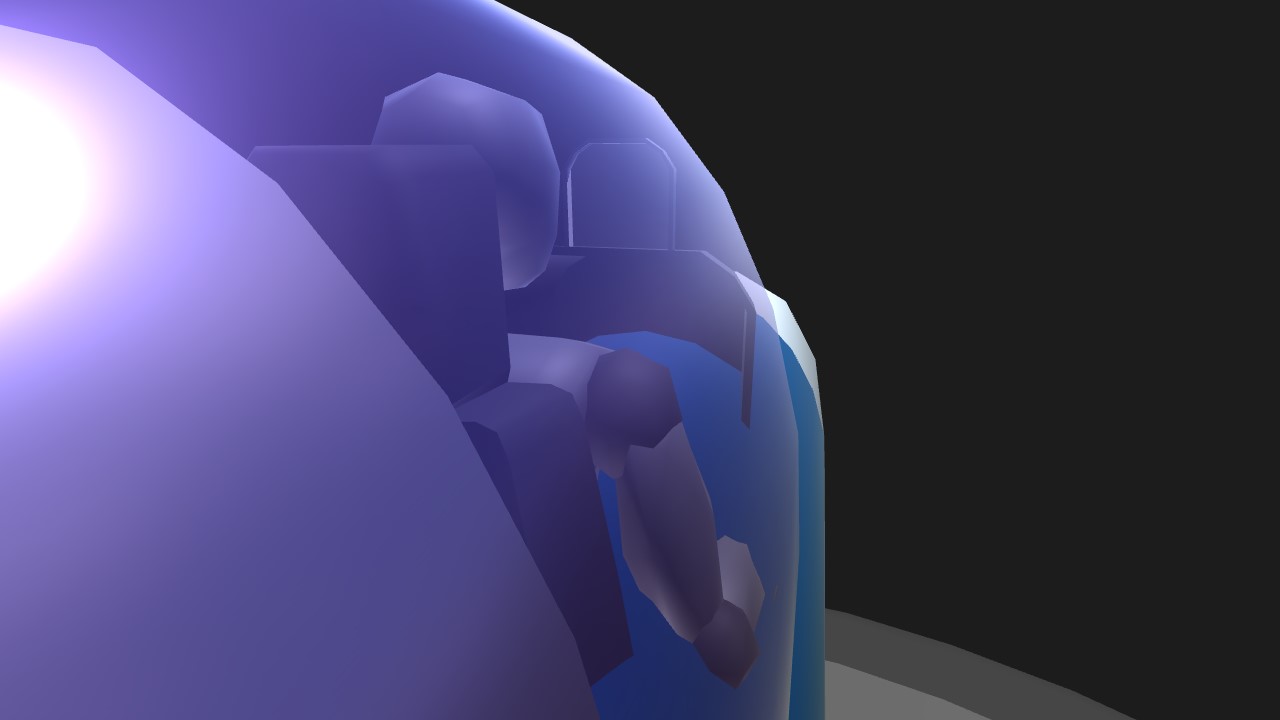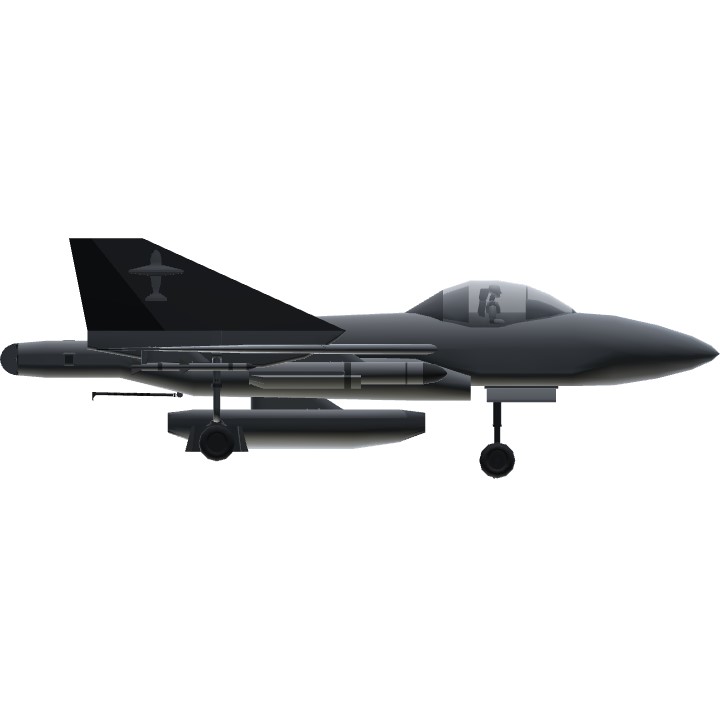This Plane Has A Real Story For Once, Read It If You Have Free Time
AG1: Hook
AG2: Wings Fold
AG3: Drop Tank
AG4: Drop A/S Nuclear Missiles
AG5: Drop A/A Missiles
AG6: Afterburner
AG7: Ejection System
AG8: N/A
VTOL: N/A
Trim: Functions
Description
The Stanmich SF7F 'Cordon' was a United States Navy carrier-based jet fighter and fighter-bomber of the early Cold War era. It was a tailless aircraft for which aerodynamic data from projects of the German Arado and Messerschmitt companies, obtained at the end of World War II through German scientists who worked on the projects, contributed; though Stanmich designers deny any link to the German research. The SF7F was the last aircraft designed by John Stanmich, who was responsible for the first fighter/bomber ever designed specifically for the U.S. Navy, the SF6F of 1922.
The F7U Cutlass
Regarded as a so-called "carbon-copy" of the Vought F7U Cutlass, The SF7F had many fewer technical and handling problems compared to the F7U. The F7U, contrary to popular belief, was an entirely separate aircraft, aside from a similarly designed turbojet configuration, and a similar wing/rudder layout. The aircraft was responsible for less than 1% of Naval casualties in the entire Cold War Era, including only 13 casualties in total, 2 of which were test pilots.
Cold War Interceptor/Bomber Competition
The Cordon was Stanmich's entry into the Cold War Interceptor/Bomber Competition, in June 7, 1950, following the numerous issues of the F7U. The Design was purely conceptualized by Stanmich, who considered the viability of a strong afterburner, active control surface stabilization, and large rudders. Thus, the SF7F was born.
Name Origin
Pilots were the origin of the nickname 'Cordon', because of the extreme explosive capabilities, specifically capable for destruction of naval fleets, and pilots stated that naval superiority would be "3 Cordons away". Surprisingly, the Cordon was capable of destruction of mid armored carriers, a multitude of cruisers, and 3 heavily armored destroyers, on every run, per aircraft.
Armaments
2x FAAA-10E Nuclear Piercing Missile
2x AIM-7 Sparrow (as of 1958)
1x50mm SE-92 Mid Rotary Cannon, replaced in 1960 by M134 Minigun
Statistics
Crew: 1
Powerplant: 2x Northern J60 afterburning turbojet engines, 37310lbf each
Fuel usage: .258 gal/s
Max speed: 721 kts
Cruise speed: 542 kts
Takeoff speed: 182 kts
Stall: 118 kts
Climb rate: 49920 ft/min with Afterburner + Military Power
Service ceiling: 50,000 ft
Takeoff Run: in calm conditions 843 ft with Afterburner + Military Power
Specifications
General Characteristics
- Created On iOS
- Wingspan 29.2ft (8.9m)
- Length 44.7ft (13.6m)
- Height 14.7ft (4.5m)
- Empty Weight N/A
- Loaded Weight 8,827lbs (4,004kg)
Performance
- Power/Weight Ratio 1.527
- Wing Loading 43.2lbs/ft2 (210.7kg/m2)
- Wing Area 204.5ft2 (19.0m2)
- Drag Points 3336
Parts
- Number of Parts 129
- Control Surfaces 6
- Performance Cost 644







@TheRealJBerry Ah, I... see.